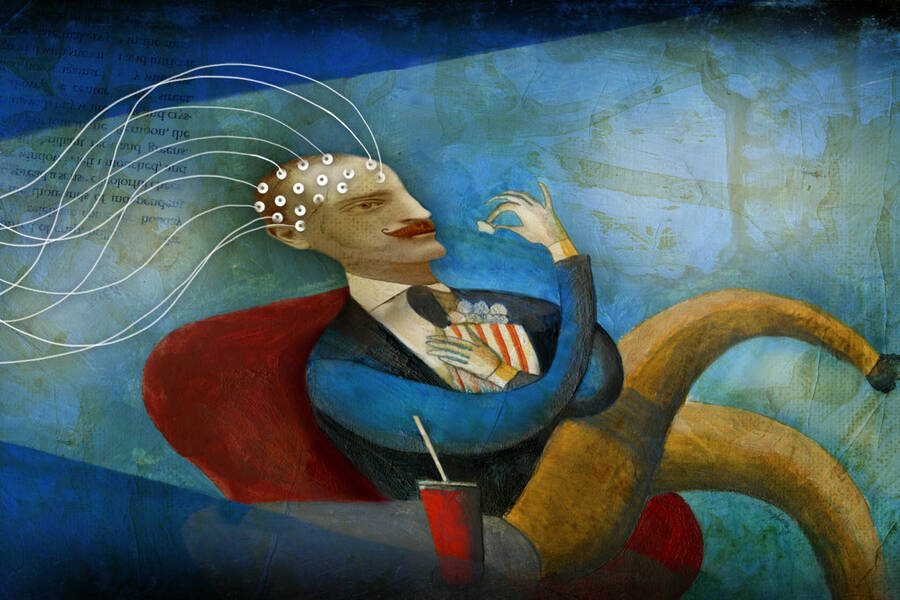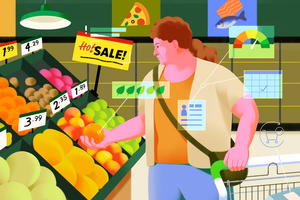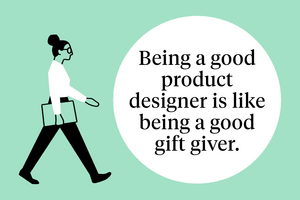Marketing Jan 4, 2016
How Much Do You Trust a Talking Raisin?
For some audiences, a “spokesthing” is more persuasive than a spokesperson.

Yevgenia Nayberg
What is your reaction when you see animated scrubbing-soap bubbles hawking bathroom cleaner? Or when plump talking fruit tells you to try California raisins? Are you inclined to buy?
Marketers are eager to know the answer. And previous research has shown that consumers prefer a talking product when compared with just a plain old product that has not been anthropomorphized.
“The typical consensus has been that it’s a good thing,” says Maferima Toure-Tillery, an assistant professor of marketing at the Kellogg School.
The benefit of using an anthropomorphized product—let’s call it a “spokesthing”—is that people react to it more like a person than an object. But that leaves open an important question.
“The first thing is to figure out who your audience is. Is this a trusting audience or not?”
“It can’t be universal that just because something becomes human, then I start to like it more and evaluate it more positively,” Toure-Tillery says. “Not everybody likes people.”
This formed the basis of her new research, conducted with Ann L. McGill at the University of Chicago. Instead of comparing spokesthings with inanimate products, they compared spokesthings with spokespeople.
The researchers found that how consumers feel about their fellow human determines how they react to anthropomorphized spokesthings.
If consumers tend to generally trust people, they likely will feel roughly the same way about a talking raisin as they do about a human spokesperson selling raisins. But if they tend to be wary of people, they likely will not trust a spokesperson as much as they do those talking raisins.
But these reactions shift if consumers are in a heightened state of awareness and are more focused than normal on who—or what—is trying to sell them something. This means that using a spokesthing to sell your product is not always a good idea.
High vs. Low Trusters
People who have high levels of interpersonal trust believe other people are generally reliable and well intentioned. Those with low levels of interpersonal trust believe the opposite. The researchers set out to understand how these levels of interpersonal trust impact the way people react to spokespeople versus spokesthings. They designed three experiments to explore the issue.
Research participants were recruited online and asked to review ads for either dental floss, light bulbs, or a new coffee brand. Then they saw a sales pitch delivered by either a human spokesperson or by an anthropomorphized object: a container of dental floss, a lamp, or a coffee mug. The anthropomorphizing was subtle. Objects were given eyes and, in the case of the coffee mug, also a smile.
After hearing the sales pitch, the participants answered questions. These included, how much did they like the product, how likely would they be to buy it, and how much did they trust the sales message?
The researchers measured interpersonal trust by using a well-established questionnaire that asks participants how much they agree with statements like, “In dealing with strangers one is better off to be cautious until they have provided evidence that they are trustworthy.”
Overall, participants with low levels of interpersonal trust were more persuaded by the spokesthing, while those high in interpersonal trust felt the same way about both the spokesthing and the spokesperson.
In other words, if you do not tend to like people, you are going to be less inclined to trust a person versus a non-person selling something. Conversely, if you tend to think well of people, then you are going to be equally receptive to a person or a personified object.
The Attentiveness Effect
The researchers also wondered what would happen when viewers were in a state of heightened awareness.
“Attentiveness is important because it determines if you actually even notice who’s talking to you,” Toure-Tillery says.
It is important to note that low trusters default to a higher level of attentiveness than their high-trusting peers.
“If I don’t trust the world, I’m going to walk around vigilant, looking around and paying attention to what’s happening,” she says. Those who are higher in trust “don’t need to pay that much attention because they think they’re safe.”
So the experiment with the new coffee brand looked at how attentiveness impacted different participants’ reactions to spokesthings and spokespeople. Participants were shown an ad for coffee, hawked by either an anthropomorphized coffee mug or a human. Some participants were led to believe that the ad was relevant to them by learning that the coffee would be coming to shops near them and that they would be entered into a raffle to win coffee products at the end of the study. Other participants were led to believe that the ad was less relevant—the coffee would not be available near them and the raffle prize would be chocolate.
High-trusting participants who thought the ad was highly relevant to them, and thus were highly attentive, had a different reaction than they did in the previous studies: rather than responding equally to both messengers, this time they were more swayed by the human messenger.
“When we don’t force them to pay attention, they’re really unresponsive to the nature of the messenger,” Toure-Tillery says. “When we make them more attentive, they tune in and we see the opposite effect. Because they trust people, they distrust lesser things that are less human.”
The low-trusting participants who were highly attentive continued to favor the spokesthings, but not at levels that were statistically significant.
Implications
Given these results, Toure-Tillery says, as a marketer, “the first thing is to figure out who your audience is. Is this a trusting audience or not?”
Past research into trust does provide some guidance here. For example, people from lower socioeconomic backgrounds tend to have lower levels of trust. So, for a medical public-service announcement that targets low-income communities, a talking stethoscope might be a good idea.
Additionally, you want to think about how attentive your audience is going to be. If you are making an ad for antismoking products, for example, and know that your audience is made up of smokers motivated to quit, then your audience is probably attentive and you can steer clear of a talking nicotine patch.
Finally, do not take the anthropomorphizing too far. When designing spokesthings for their study, researchers showed participants an anthropomorphized lamp with arms as well as eyes. In an unexpected turn, participants rated the lamp with arms as just as human as the actual human spokesperson. A lamp with eyes but no arms, however, was ranked as less human than the spokesperson.
So, Toure-Tillery says, if you are going to use a spokesthing, it would be best to keep the anthropomorphizing very subtle, lest you lose the advantage of a nonhuman messenger.
“Our recommendation would be to not go too far into humanness,” Toure-Tillery says. “The more human it becomes, the more people react to it as if it were human, which is what, in some cases, you want to avoid.”
Touré-Tillery, Maferima, Ann L. McGill. 2015. Who or What to Believe: Trust and the Differential Persuasiveness of Human and Anthropomorphized Messengers. Journal of Marketing.



